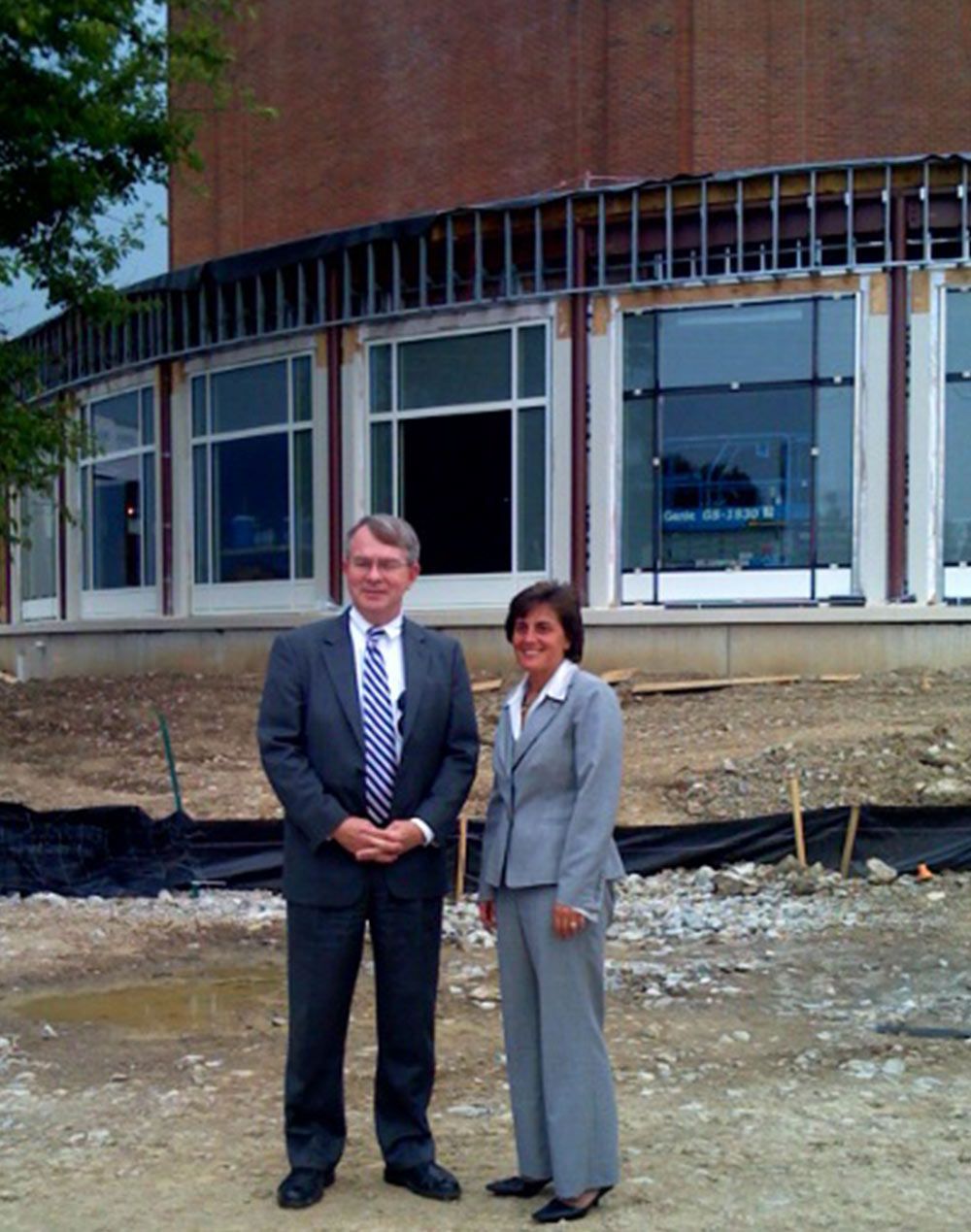A New Partnership
Our History
Founded in 2008, the McCoy Center was created through a unique partnership between the City of New Albany, Plain Township, New Albany-Plain Local School District, and the New Albany Community Foundation.

Collaboration
When early discussions about an “Endowed Programs in the Arts” began, it was noted that the high school auditorium was planned to seat 750 and include classroom spaces. With a limited construction budget, however, the facility would be a modest, cinder block building with average acoustics at best and few upgrades in terms of equipment, rehearsal spaces or performance capabilities. In considering whether or not a lecture series and master classes featuring renowned intellectuals, artists and leaders could be supported through private endowments, several questions surfaced:
Could this auditorium serve as venue for guest lecturers and artists in addition to serving as a school facility?
Could these lectures and “artist in residence” visits enrich the school curriculum for all students?
Could this auditorium serve community uses as well as school uses?
Could private money be raised to enhance the quality of the facility?
Concurrent to these discussions, varying levels of discussion had occurred with Village of New Albany and Plain Township officials regarding a future “community center” or “senior center” being built to accommodate community needs and uses.
Through joint discussions initiated by the Superintendent of the School District and convened by the New Albany Community Foundation, it seemed logical to community leaders that perhaps the school district, the village, the township and the private sector could leverage resources and build one, higher quality facility that could serve both school and community needs. At the very least, the potential benefit and savings to the community merited some investigation and research to determine if such collaboration were feasible.
Need
While the idea of bringing guest lecturers and artists to New Albany to share their life paths, inspirations, talents and work with students and residents had merit, no venue existed that could accommodate a large audience. The New Albany School District had always planned to have an auditorium, but one had never been built. The original high school plan in the early 1990’s included an auditorium, but a failed merger between the village and township and the resulting legal uncertainties delayed the high school construction. When construction resumed, the bond market and construction market had changed and cuts were required. As a result, the auditorium was not funded or built. The school continued to use a small, 125-seat mini-theatre. However, no venue existed to hold medium or large-sized events.
In 2001, the school district’s Facilities Committee, a group of approximately 40 residents and school representatives, met for the better part of a year leading up to a 2001 ballot issue to make recommendations to the School Board on capital or building needs. The meetings were held in a public forum. The Facilities Committee recommended four capital needs to the board. They included a K-1 Elementary School, a High School expansion, athletic improvements including the football stadium, and a performance auditorium.
Based on the facilities committee’s recommendation and community input, the board approved placing a $38 million bond issue on the November ballot. That year, after a very lengthy, public process involving resident committees, school administrators and the Board of Education in which those four components were promised, the bond issue was approved by the community.
Funding
Funding for the facility:
$5 million from New Albany-Plain Local School District (from the 2001 bond issue approved by the community that included a performance auditorium, unanimously approved by the Board of Education);
$5 million from the Village of New Albany (from tax increment financing, which means no tax increase to village residents and no money being diverted from the school district or Plain Township Fire Department, unanimously approved by the Village Council);
$3 million from Plain Township (through the TIF, unanimously approved by the Board of Trustees);
$2 million from the New Albany Community Foundation (from private donors to fund add alternates such as the north teaching building, equipment and enhancements, unanimously approved by the Foundation Board of Trustees).
The New Albany Company made a generous land donation of approximately 4 acres valued at $1.5 million at the corner of Dublin-Granville Road & Main Street, contiguous to the Learning Community Campus.
The 35,000 square feet arts center
The Design
The facility is designed by Cleveland architectural firm, Westlake, Reed & Leskowsky. The building’s acoustical properties are designed by Jaffe Holden Acoustics. Both firms are recognized nationally for their expertise in designing theatres and auditoriums.
The design of the building has been carefully scaled and articulated to strengthen and preserve existing campus and community scales and patterns. Like most of the existing campus and civic buildings found in New Albany, the main octagon-shaped theatre (audience chamber) and stage house are brick masonry volumes.
Stage and performance support spaces as well as an educational classroom are designed within two volumes clad in white clapboard and wood panels, which relate to the school’s Administration Building to the north and are more residential in scale. The Rehearsal Room volume is positioned on the orthogonal geometry of the existing campus buildings and serves as an anchor or terminus, linking the existing school buildings and student circulation to the facility.
The orientation and massing of the transparent elliptical-shaped Lobby links these distinct programming spaces on one level and provides natural light throughout the day with views out to the surrounding landscape. At night, the lobby becomes a glowing beacon and living room for the community, used for gathering, performances and special events.
The main formal entrance is from the west side, where several existing mature trees have been preserved and define the outdoor terrace and entry portico that will be used as an outdoor gathering space before and after an event. This West Dependency includes an entry vestibule, box office and concessions area. There is also a second entrance from the north, which will be used on a daily basis by students and will serve as the front door to the school campus. The East Dependency includes Lobby support space as well as the main Restrooms for the facility.
The acoustical requirements for the room were critical, particularly for the students. The theatre has been designed as a multi-use facility for music, dance and theatre. Each of these art forms required their own special natural acoustic environments and so, the theatre has been designed with the ability to vary the acoustic environment for each of these presentations.
In order to provide outstanding natural musical acoustic results, the perimeter walls of the theatre have been designed and will be constructed of a hard, dense terra cotta clay tile, which has a deep red appearance. Maple wood will be used throughout the interior to accent several important elements in the room, which will provide a sense of warmth and intimacy.
The octagon plan was inspired by earlier theatre precedents and is a characteristic form of the American “Opera House” of the period just after the end of the Civil War. The surviving 19th century theatres with this type of plan have a nice balance between formality and playfulness, and so it’s a pleasant, intimate shape for the type of community facility envisioned for New Albany.
Phelps House
As the Arts Center was designed, the community stakeholders determined that the auditorium and classroom spaces should be prioritized over building office spaces. As a result, only a few small offices were constructed in the Arts Center building and they are used primarily for school purposes. As the Arts Center Board began interviewing for a Director to serve the community’s interests, the Village of New Albany offered to give the Director and his staff temporary space in Village Hall until additional space could be found.

